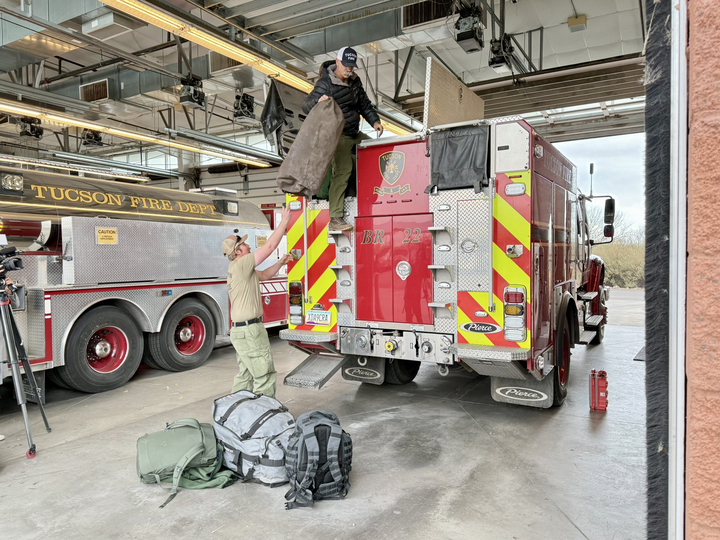Six patients remain at University Medical Center, with three in serious condition, two in fair condition and Rep. Gabrielle Giffords in critical condition.
“”I’m happy to say she’s holding her own,”” said Dr. Michael Lemole, chief of neurosurgery at University Medical Center. “”Her status is the same as it was yesterday; she’s still following those simple commands. We’ve been able to back off on some of that sedation. In fact, she is able to generate her own breaths.””
The only reason she is being kept on the ventilator is to protect her from complications, according to Lemole.
“”We have to play this, really, according to her timeline, not ours,”” Lemole said. “”She’s going to take her recovery at her own pace, and I’m very encouraged by the fact that she has done so well.””
The rates of survival and recovery for Giffords’ type of injury are “”abysmal,”” Lemole said.
“”She has no right to look as she does,”” he said.
Dr. Peter Rhee, medical director of UMC’s trauma and critical care and professor of surgery at UA’s College of Medicine’s Department of Surgery, said the “”resources of the entire military have been made available to us,”” because of Giffords’ husband’s connections as an astronaut and as active duty Navy personnel.
Rhee asked for assistance from neurointensivist Col. Geoffrey Ling, interim chair of neurology at Uniformed Services University of Health Sciences, and James Ecklund, retired Army colonel and medical director of neurosciences for Inova Health System and chairman of the department of neurosciences at Inova Fairfax Hospital.
“”Everything we’ve seen reflects the highest quality of care,”” Ecklund said.
Ecklund also mentioned that the care from UMC saved Giffords’ life.
Ling stressed the severity of Giffords’ injury but said it is promising that she is “”thriving”” under the care at UMC.









